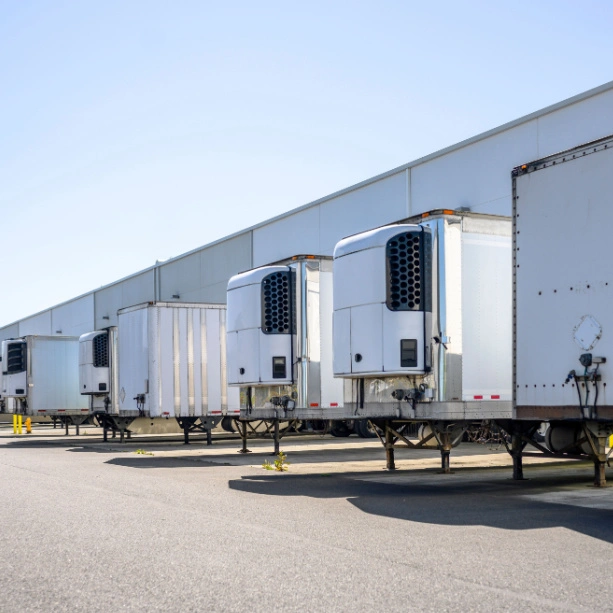In today’s interconnected global marketplace, cold chain logistics has become increasingly difficult to manage, especially for industries that deal with temperature-sensitive products such as pharmaceuticals, food, and biologics. Maintaining the integrity and safety of these products throughout the entire distribution process is paramount to ensure regulatory compliance, meet consumer expectations, and protect brand reputation. Cold chain monitoring emerges as a critical solution to address these challenges, offering real-time visibility and control over temperature conditions in the supply chain. By leveraging a cold chain monitoring system, companies can proactively manage temperature fluctuations, mitigate risks, and optimize efficiency. Let’s explore the vital role that cold chain monitoring plays in modern supply chain management, its impact on product quality, waste reduction, and compliance, and its contribution to logistics success in today’s dynamic marketplace.
Increase Your ROI by Investing in AirFinder Everywhere
- Loss Prevention. Reduce the amount of loss that occurs during the supply chain process
- Location Coverage. AirFinder Everywhere uses a combination of GPS, Cellular, and WiFi to determine location everywhere
- Security Alerts. Know when a delay in shipment has occurred so the problem
can be addressed immediately.
Why Monitor the Cold Chain?
Monitoring the cold chain is paramount for companies dealing with temperature-sensitive products. The status of the cold supply chain does not just impact the company transporting the assets, but the end consumer.
FDA Regulations
The FDA has an FSMA regulation to shift the focus from responding to foodborne illnesses to preventing them from happening in the first place. Nearly 50 million people in the United States get sick each year from foodborne illnesses. Some of those get hospitalized, and some of those die. The FDA enacted this regulation with many rules to prevent foodborne illness from happening with the intent of saving consumers from serious illness. The Sanitary Transport Rule, Protection Against Intentional Adulteration, Preventive Control for Human and Animal Food, and Requirements for Additional Traceability Records for Certain Foods are the main rules that impact fleet managers. These rules all play a role in ensuring that sensitive foods being transported are transported safely without spoilage. There are other rules that impact other parts of the cold chain, including the manufacturer, farmer, and store, but these are the ones critical to logistics. To follow these rules, you need to have a system in place that can track the location of your reefer trailers, monitor the temperature inside the trailers (ideally at the pallet or package level), and report the collected data.
Save Money
Cold chain logistics management saves companies money by preventing costly product losses due to temperature excursions. By closely monitoring temperature conditions throughout the supply chain, fleet managers can identify and address temperature breaches before they escalate into product spoilage or damage. This proactive approach minimizes the need for disposal of unsuitable products, reducing waste and associated financial loss. By ensuring product quality and safety, companies can avoid expensive recalls, legal liabilities, and damage to their brand reputation. Efficient cold chain temperature monitoring also leads to extended shelf life of products, reducing the frequency of replenishment orders and inventory carrying costs. Furthermore, by optimizing transportation routes and storage conditions based on real-time temperature data, companies can minimize energy consumption and operational expenses.
Customer Service
Cold chain asset monitoring significantly enhances customer service by ensuring the consistent delivery of high-quality products that meet safety standards and specifications. By maintaining optimal temperature conditions throughout the supply chain, companies can guarantee that their products arrive at their destination in pristine condition, free from spoilage, contamination, or degradation. This reliability builds trust and confidence among customers, leading to increased satisfaction and loyalty. Cold chain management also enables companies to provide accurate and timely information to customers regarding the status and handling of their orders, enhancing transparency and communication. In the event of any temperature deviations or other issues, proactive monitoring allows for swift corrective action to be taken, minimizing disruptions and delivery delays. By prioritizing product quality and safety through effective cold chain monitoring, companies can elevate the customer experience and differentiate themselves in the market, ultimately fostering long-term relationships with their customers.
What You Can Achieve With Cold Chain Monitoring
Product Quality
Cold chain monitoring significantly improves product quality by ensuring that temperature-sensitive products are stored and transported under optimal conditions throughout the supply chain. By closely monitoring temperature levels and maintaining them within specified ranges, companies can prevent the degradation, spoilage, or contamination of their products. This meticulous temperature control helps preserve the sensory attributes, nutritional value, and efficacy of the products, ensuring that they meet the highest quality standards upon arrival to the end consumer. Cold chain monitoring facilitates early detection of any deviations or abnormalities in temperature, allowing for prompt corrective actions to be taken to prevent damage or loss. Consistently delivering high-quality products not only enhances customer satisfaction but also protects the company’s brand reputation and fosters trust among consumers.
Meet Compliance
Cold chain monitoring ensures compliance with regulatory requirements and industry standards by providing comprehensive documentation and real-time monitoring for temperature conditions throughout the cold supply chain. By accurately recording temperature data, companies can demonstrate strict adherence to regulatory guidelines governing the storage and transportation of temperature-sensitive products. Cold chain monitoring systems generate detailed reports that include temperature logs, alerts for any deviations from specified ranges, and documentation of corrective actions taken. These reports serve as valuable evidence during regulatory inspections and audits, showcasing the company’s commitment to maintaining product integrity and safety. Furthermore, cold chain monitoring helps companies proactively identify potential compliance risks and implement preventive measures to mitigate them, thereby minimizing the likelihood of non-compliance issues. By ensuring compliance with regulatory standards, cold chain monitoring not only protects a company from fines, penalties, and legal liabilities, but also instills confidence in their commitment to quality and safety.
Reduce Waste
Cold chain monitoring significantly reduces waste by preventing the spoilage and deterioration of temperature-sensitive products throughout the supply chain. By closely monitoring temperature conditions at every stage of the cold chain process, companies can identify and address potential issues before they escalate into product losses. Real-time monitoring systems continuously track temperature levels, providing immediate alerts when deviations from the optimal range occur. This prompt notification enables swift corrective actions to be taken, such as adjusting storage conditions or stopping for maintenance, to prevent product damage or spoilage. Cold chain tracking and monitoring optimizes inventory management by ensuring that perishable goods are utilized efficiently and not overstocked beyond their shelf life. By minimizing the occurrence of temperature excursions and maintaining product quality, companies can reduce the amount of unsellable or wasted inventory, thereby lowering associated disposal costs and improving overall profitability. Ultimately, by prioritizing the preservation of product integrity through effective cold chain monitoring, companies can minimize waste and maximize the utilization of valuable resources across the supply chain.
Components of Cold Chain Monitoring
Device
Cold chain monitoring devices are simple to use once installed, and our AirFinder device can be installed in a simple process. First, you attach our SuperTag Plus device to the trailer hauling the foods. You then attach our Bluetooth LE tags to the pallets and packages carrying the foods. These tags are the ones with the temperature monitoring property, so this is where the temperature data will be centralized. The SuperTag Pro acts as an access point while also providing location information on the trailer for additional visibility.
Software
Not every item has to be kept at the same temperature. Our software allows you to set up a safe temperature range for each individual tagged item to be kept in. As soon as there is a breach in the temperature range, an alert is sent out so the problem can be addressed before spoilage occurs. The software also tracks the location of the trailer. That way, when a temperature breach occurs, you can identify where it happened and what may have caused the problem so you can take action to avoid it in the future.
Reporting
Reporting is an essential part of maintaining FDA compliance. We provide customized reports for fleet managers to prove compliance with the FSMA regulation. Our cold chain solution collects location and temperature data to prove that sensitive assets have maintained a safe temperature at every stage of the transportation process. Advanced features may include predictive analytics capabilities to forecast potential temperature excursions and proactively recommend corrective actions. Integration with other systems such as inventory management and broader logistics tracking further enhances visibility and efficiency.
Are You Managing Your Cold Supply Chain?
Cold chain monitoring plays a pivotal role in modern supply chain management by ensuring the integrity, safety, and quality of temperature-sensitive products throughout their journey from production to consumption. By implementing a cold chain temperature monitoring system, fleet managers can proactively manage temperature conditions, mitigate risks, and comply with regulatory standards. The benefits of cold chain monitoring extend beyond cost savings and waste reduction to encompass enhanced customer satisfaction, brand reputation, and overall supply chain efficiency.
As industries continue to evolve and consumer expectations rise, the importance of cold chain monitoring in safeguarding product integrity and ensuring regulatory compliance will only become more pronounced. Investing in robust cold chain monitoring software is not just a regulation-bound necessity but a strategic imperative for companies looking to thrive in today’s competitive marketplace. By prioritizing the preservation of product quality and safety through effective cold chain monitoring, companies can position themselves for sustained success and growth in an increasingly complex global supply chain landscape. To learn about our cold chain monitoring solution, book a demo with our team of experts.

Publisher: Source link











